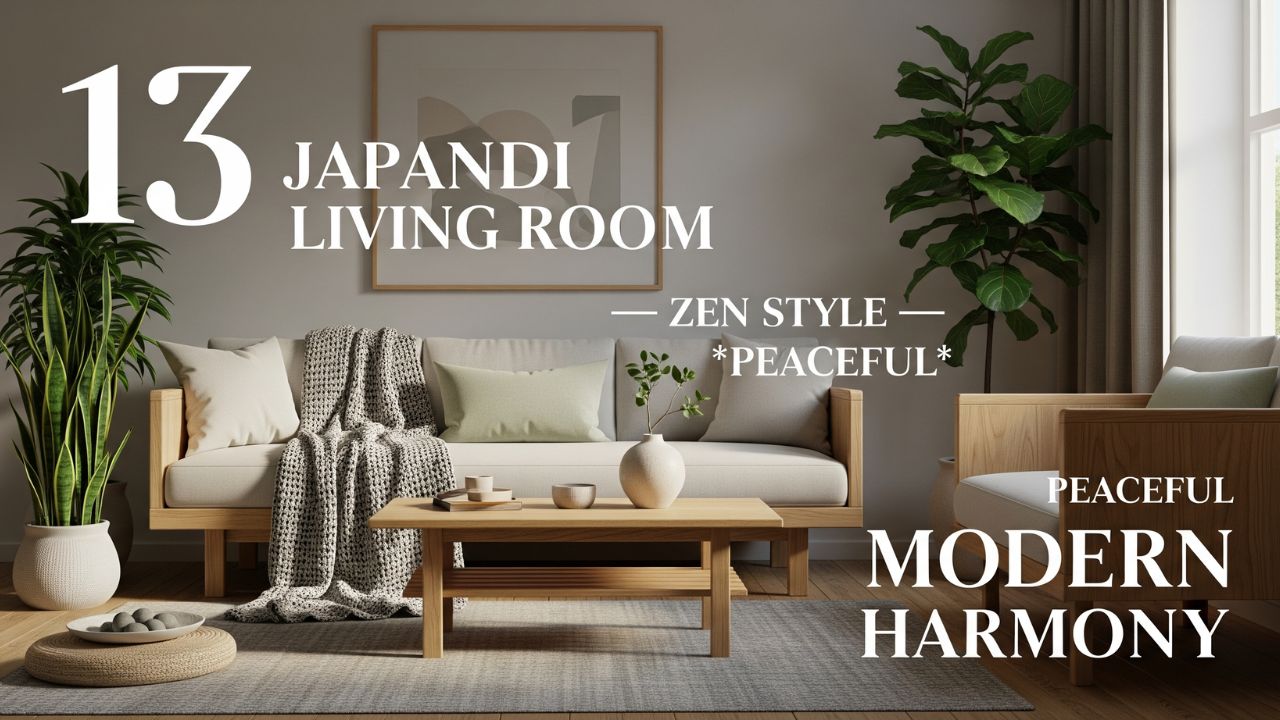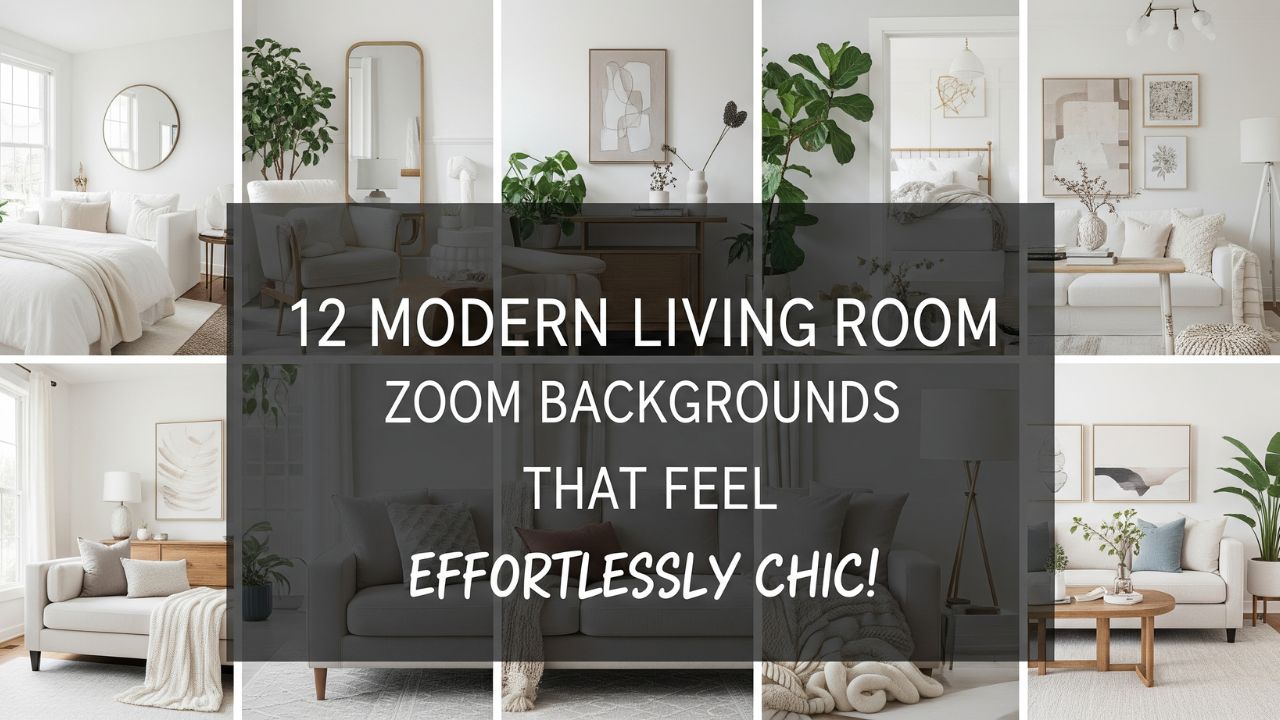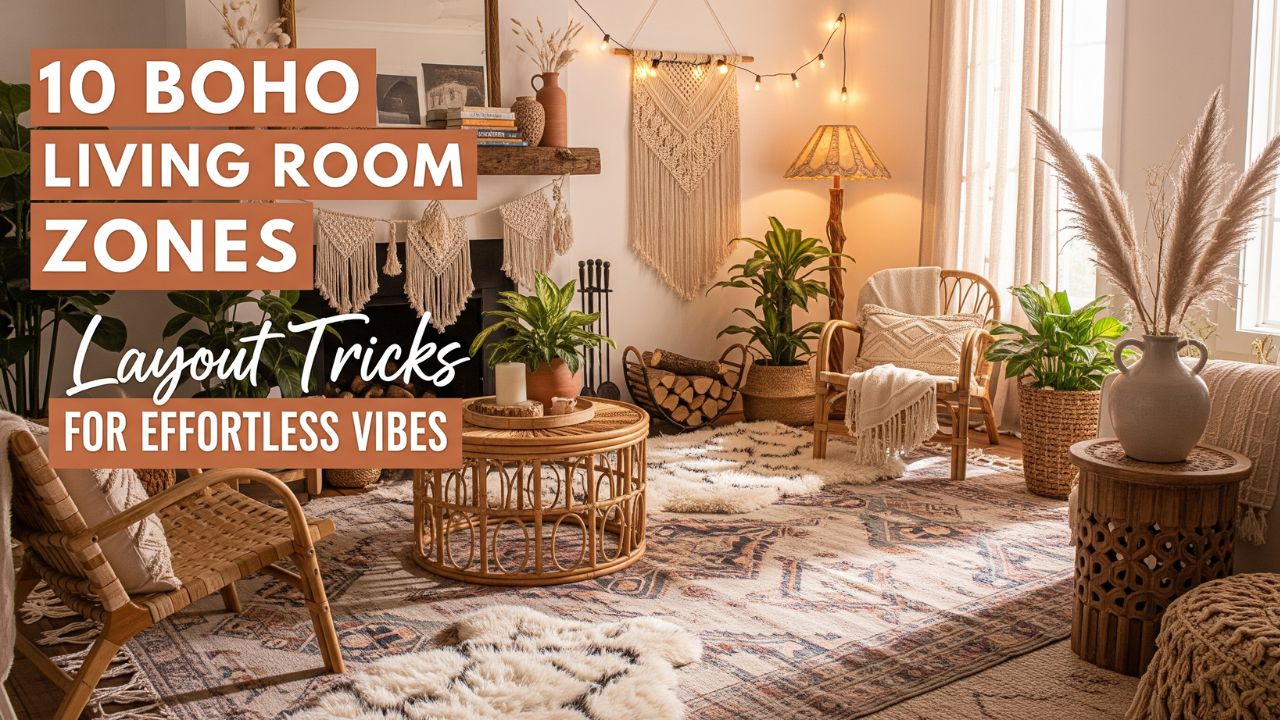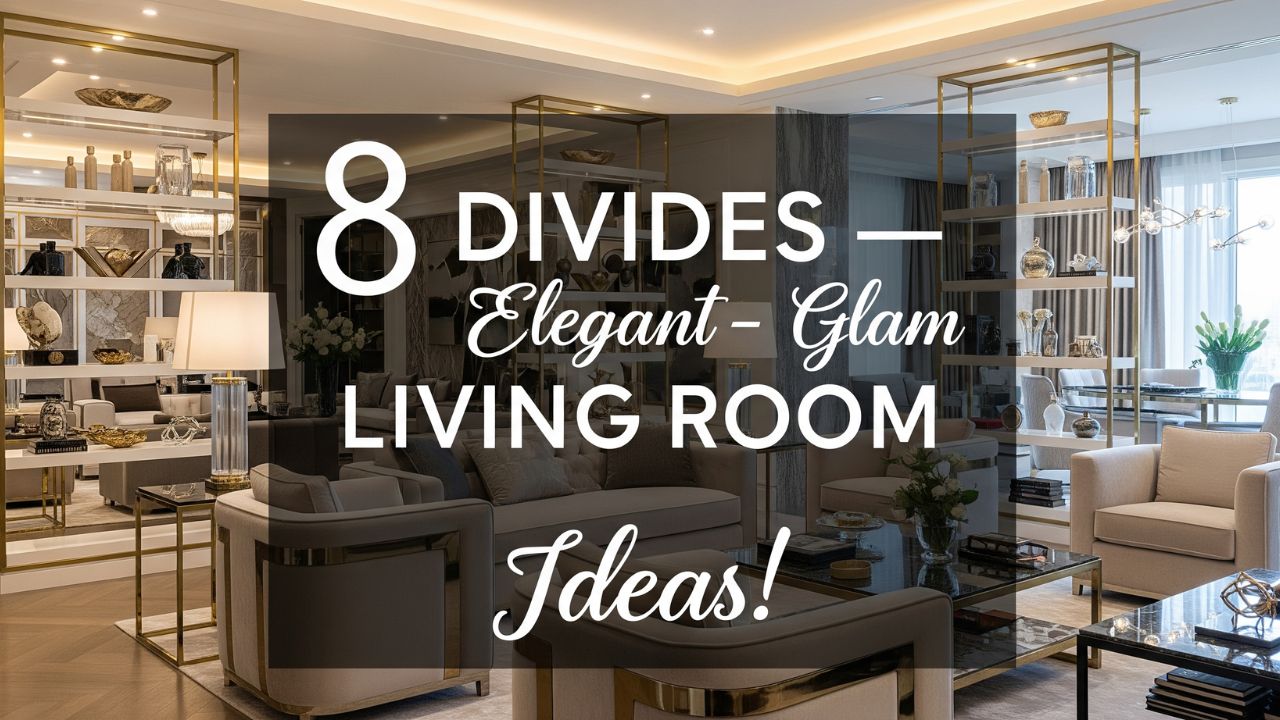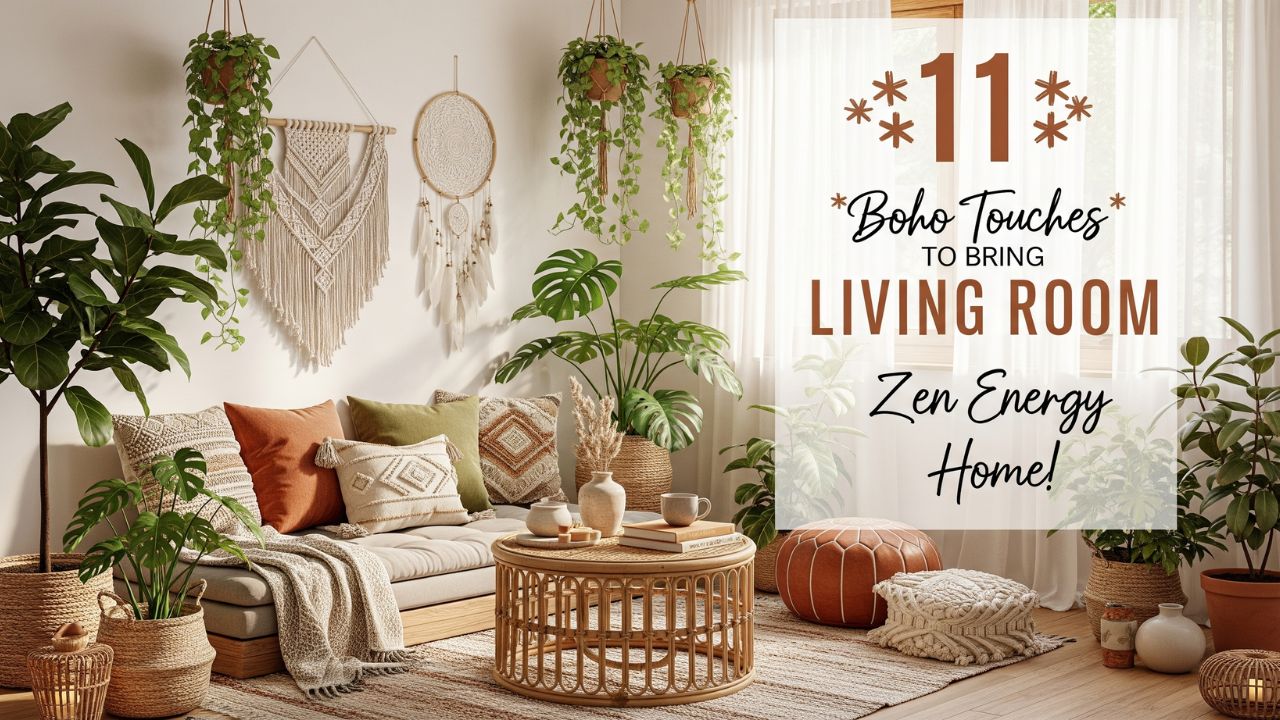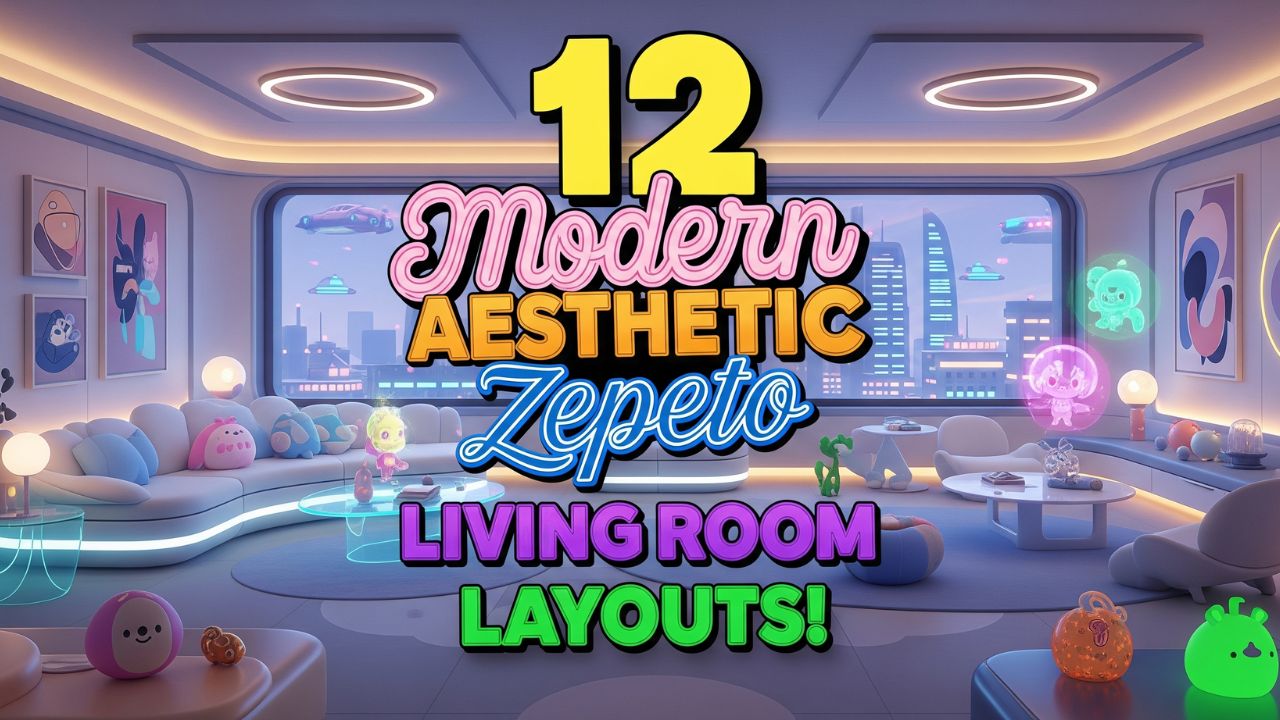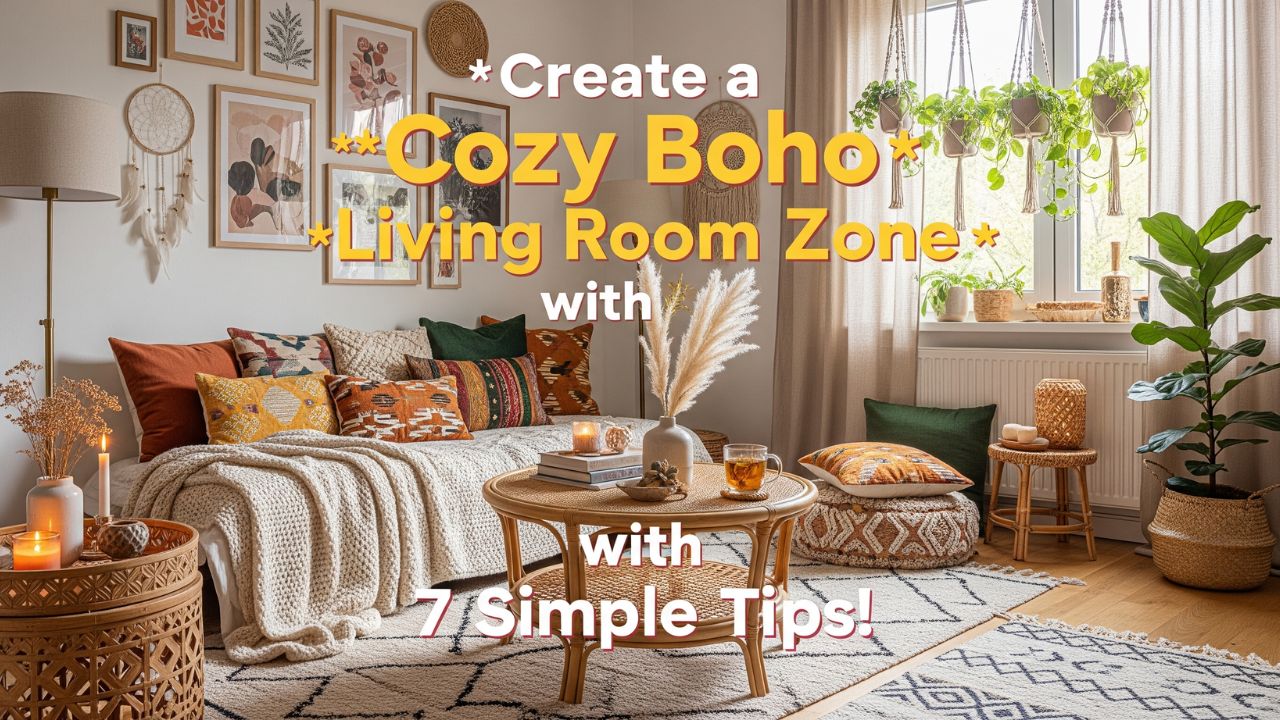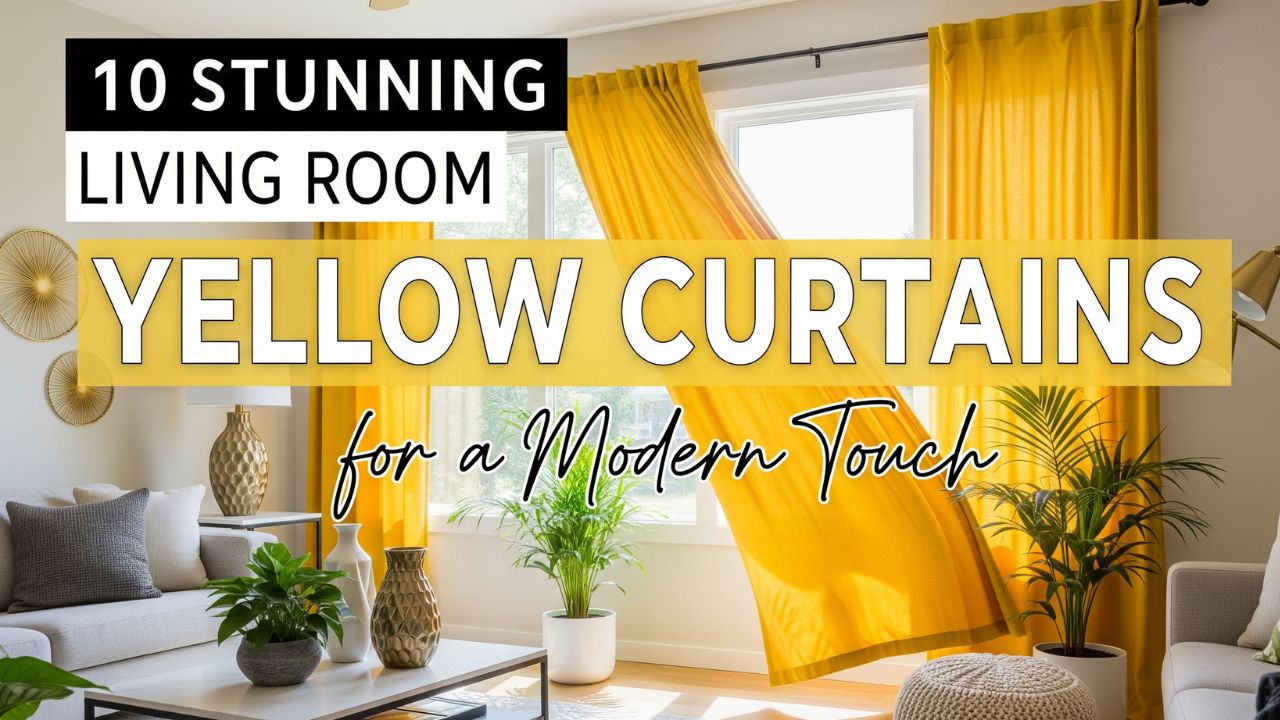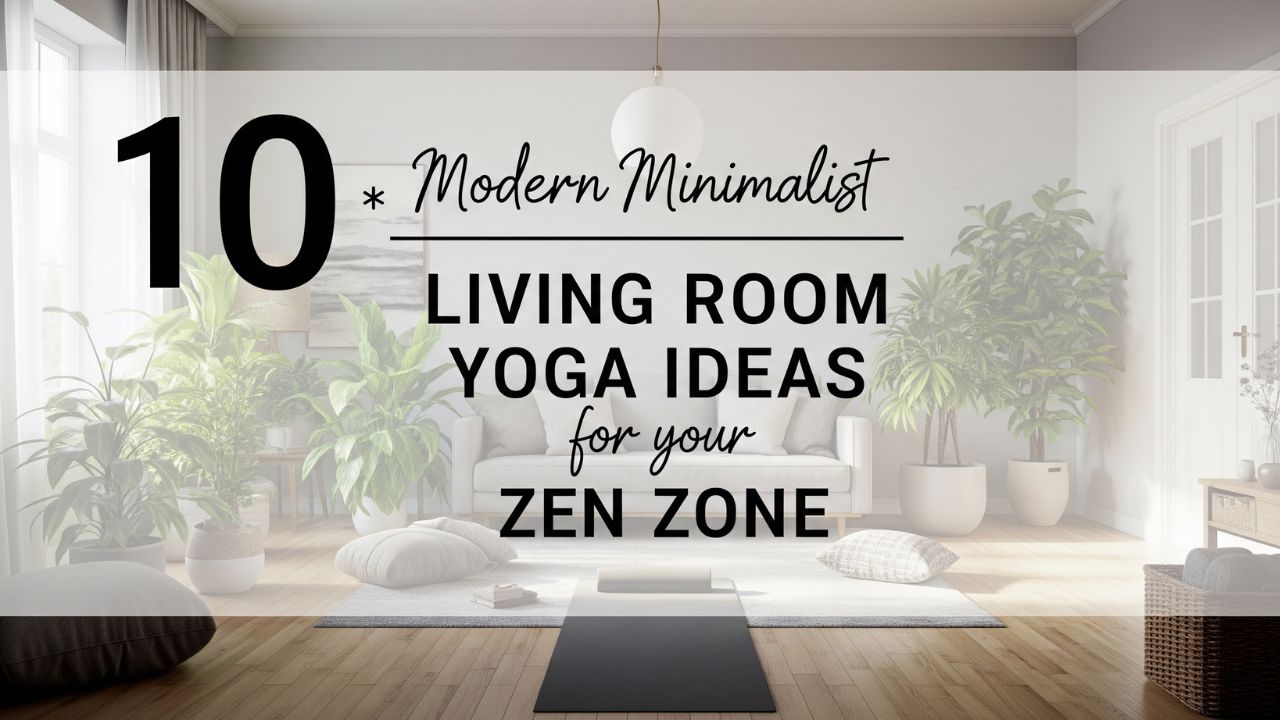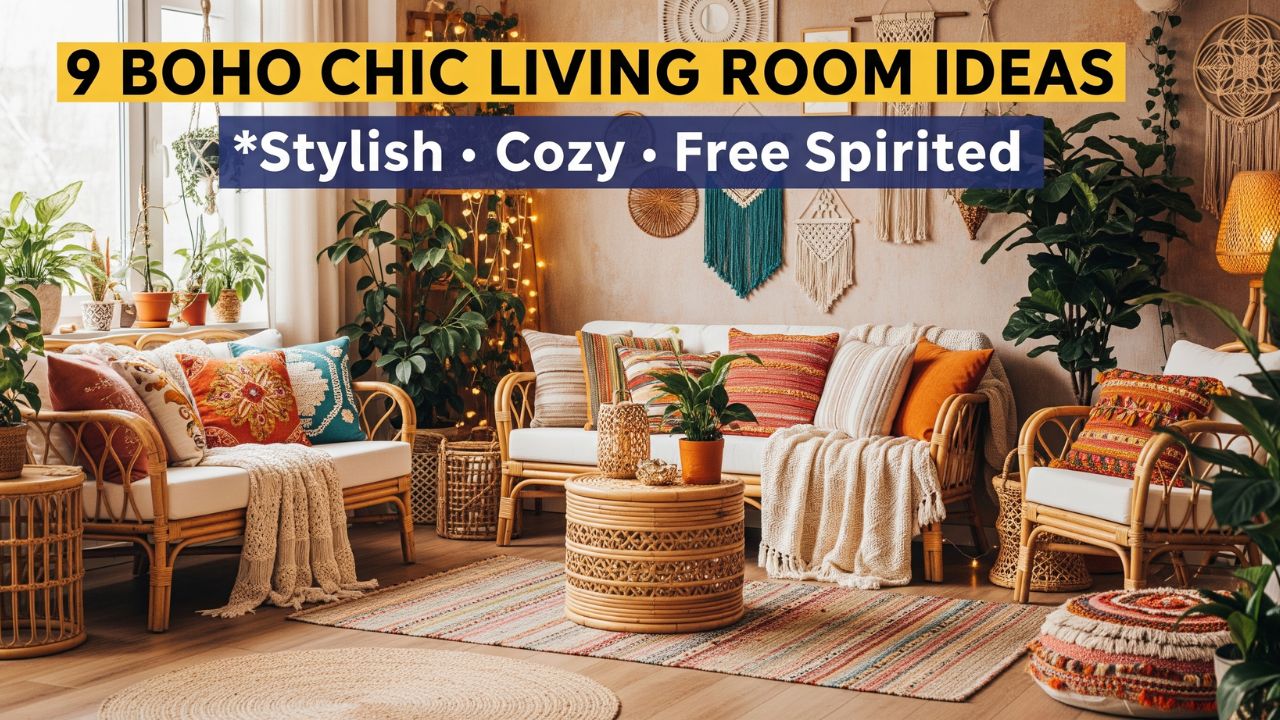Ever wondered why Scandinavian homes look effortlessly calm, cozy, and balanced — even with minimal furniture?
It’s not magic; it’s mindful design. The secret lies in how every element, especially the living room table, blends simplicity, warmth, and purpose.
The Scandinavian aesthetic is rooted in hygge — the Danish concept of comfort and contentment — and lagom, the Swedish idea of “just enough.” Together, they create interiors that are practical yet peaceful, minimal yet full of life.
If your living room feels cluttered or cold, it might just need the right table — one that anchors your space without overpowering it. In this guide, we’ll explore 13 Scandinavian living room table ideas that transform your home into a calm, functional, and stylish sanctuary.
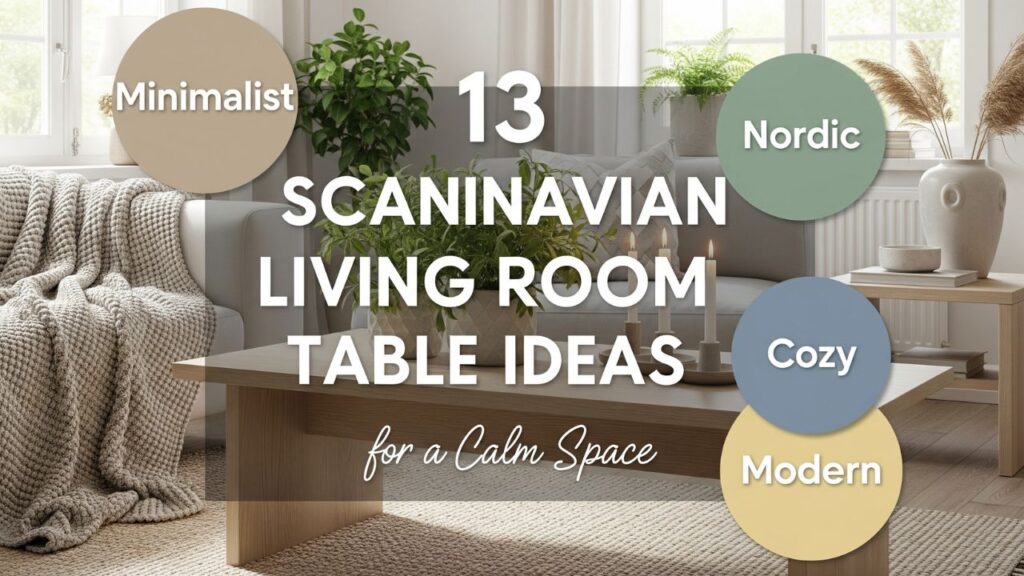
Table of Contents
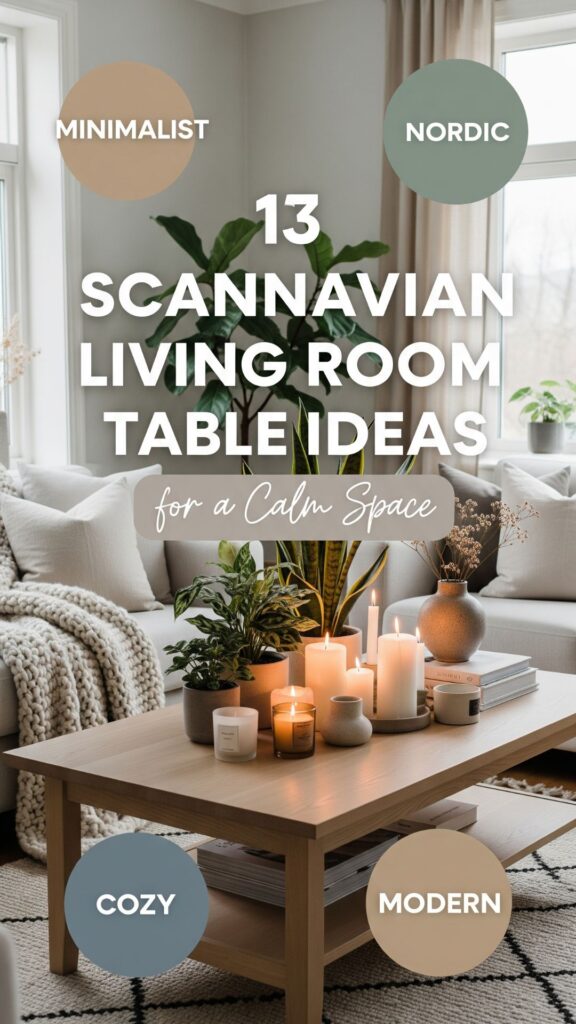
13 Scandinavian Living Room Table Ideas
1. The Classic Light Wood Coffee Table
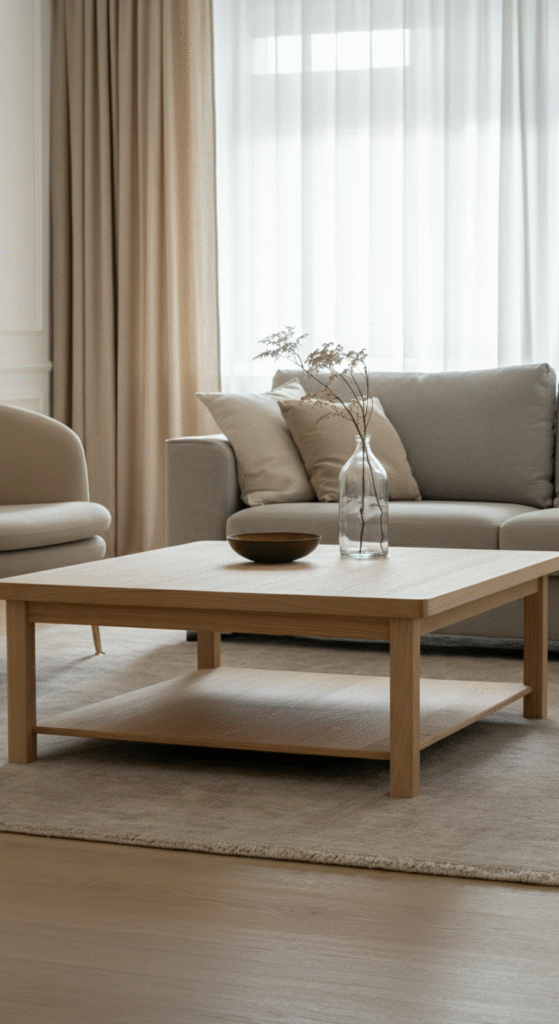
Nothing defines Scandinavian interiors like light-toned wood — think oak, ash, or birch. A light wood coffee table instantly brightens your living room, reflecting natural light and adding visual warmth.
Scandinavians believe that wood should age gracefully, not hide behind polish. The subtle grains, the texture, and the imperfections — all celebrate authenticity.
Do you know? Birchwood, a Scandinavian staple, is used not only in furniture but also in traditional saunas because of its smooth finish and durability.
2. The Minimalist Round Table
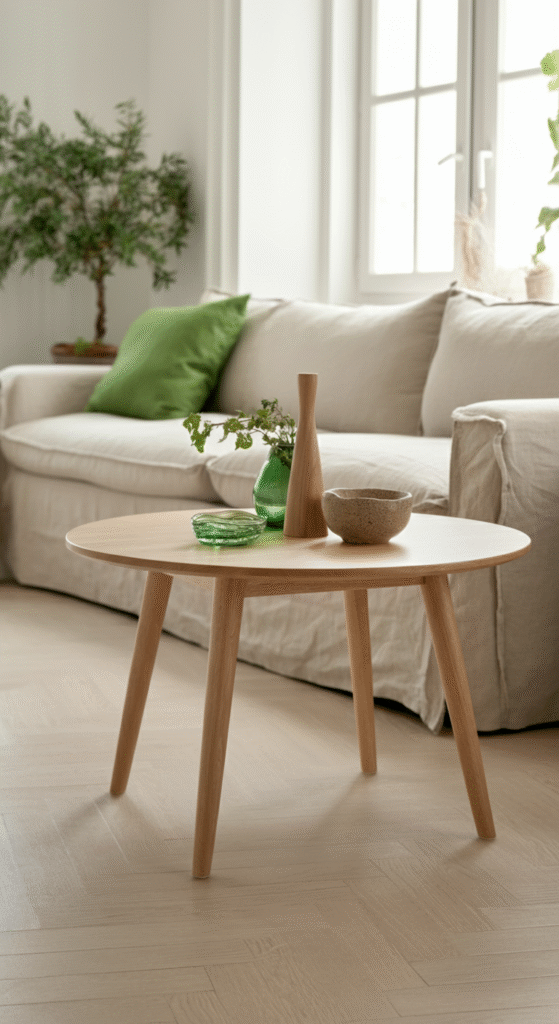
If you’re aiming for balance and harmony, round tables are your best friend. They soften harsh lines and create a natural flow, especially in compact spaces.
A round Scandinavian table, often supported by tapered legs, blends form and function perfectly. Choose natural finishes, pale oak, or matte white surfaces to keep the space open and inviting.
This style works beautifully in both small apartments and larger rooms that need a soft focal point.
3. Whitewashed Table for Airy Vibes
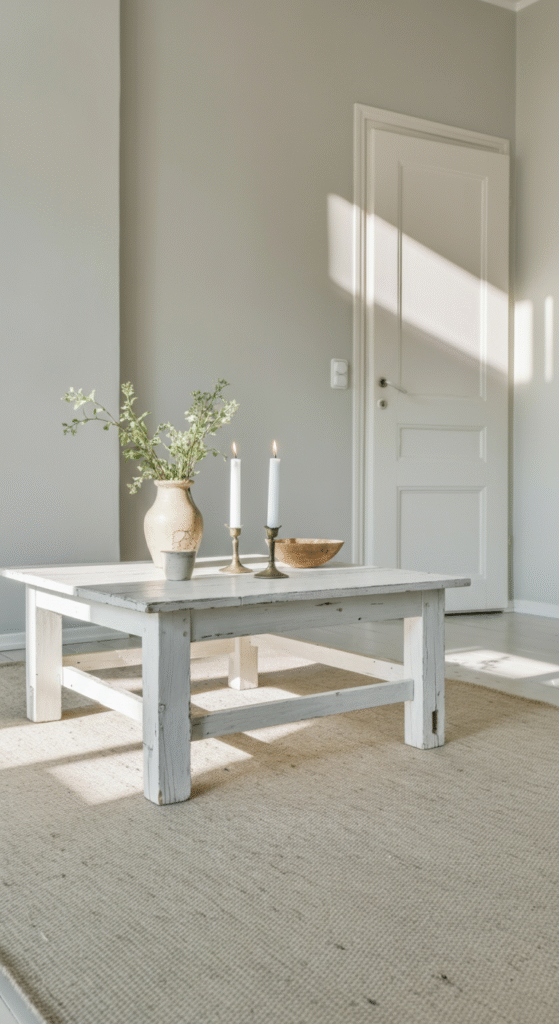
Whitewashed tables evoke that signature Nordic brightness — calm, airy, and timeless.
This finish not only complements neutral interiors but also makes small spaces appear larger. Pair it with soft textiles like linen throws or a jute rug to complete the effortless Scandinavian charm.
Interesting fact: In Nordic countries, long dark winters inspired light interiors — hence, white and pale woods dominate Scandinavian homes to maximize natural light.
4. Nesting Tables with Functional Elegance
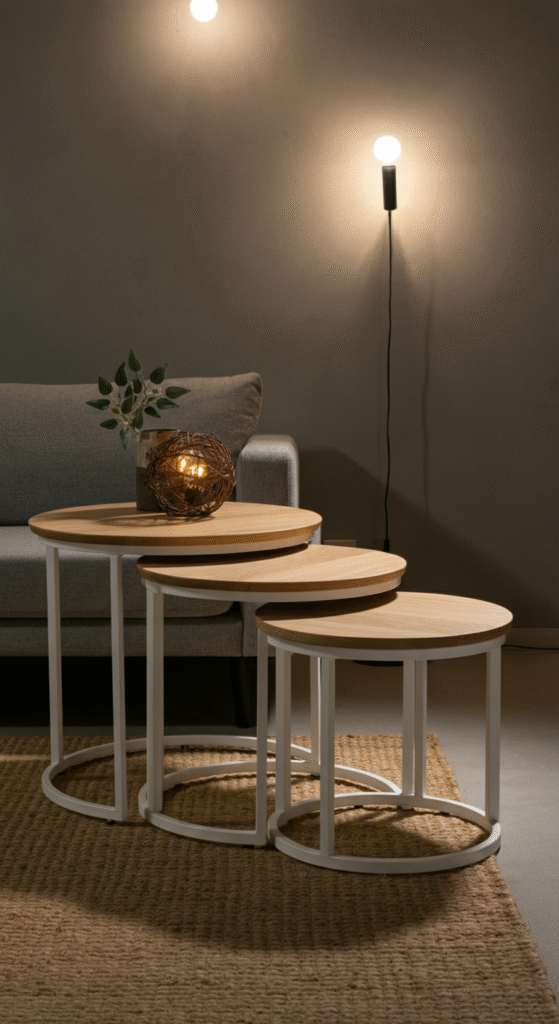
Scandinavians value adaptability. Nesting tables perfectly reflect this philosophy. You can spread them out when guests arrive or tuck them neatly when not in use.
Opt for minimalist metal frames or slender wooden legs with round or oval tops for a modern yet practical aesthetic. The layering of shapes adds visual depth while maintaining simplicity.
This design is especially useful in urban apartments where space optimization is key.
5. The Statement Marble-Top Table
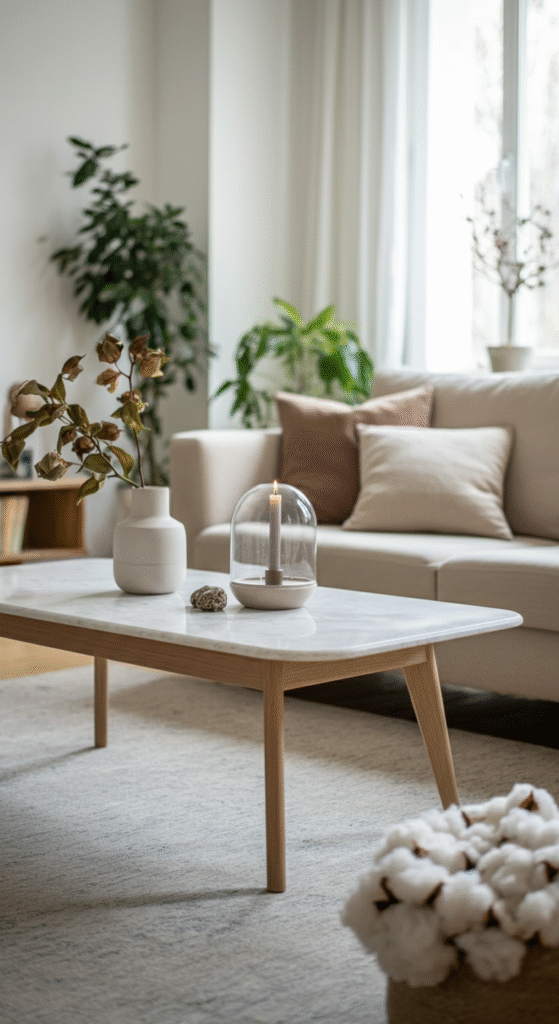
Scandinavian design isn’t only about wood — it’s about balance. A white marble-top table with simple wooden legs offers an elegant contrast.
It introduces a sense of sophistication without breaking the minimal theme. Marble tables pair perfectly with neutral furniture, beige sofas, and textured rugs, giving your space that subtle touch of luxury.
Myth Buster: Many assume marble clashes with minimalist interiors, but in Scandinavian design, its natural patterns actually complement the organic feel of wood and fabric.
6. Rustic Scandinavian Farmhouse Table
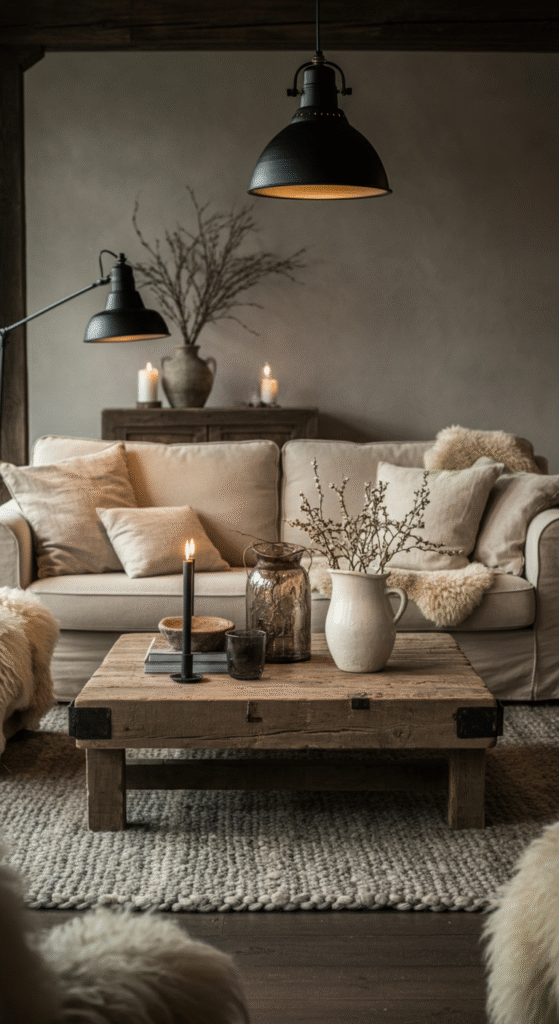
If you want warmth and nostalgia, bring in a rustic reclaimed wood table. Its rough texture and visible grains add soul to the simplicity of Scandinavian decor.
Combine it with soft sheepskin rugs, neutral-toned sofas, and matte black accents. This mix of rough and refined creates that perfect hygge ambiance — cozy yet uncluttered.
Do you know? The term hygge has no exact English translation, but it roughly means “a quality of coziness that promotes well-being.” Furniture like this embodies that feeling.
7. Mid-Century Modern Scandinavian Blend
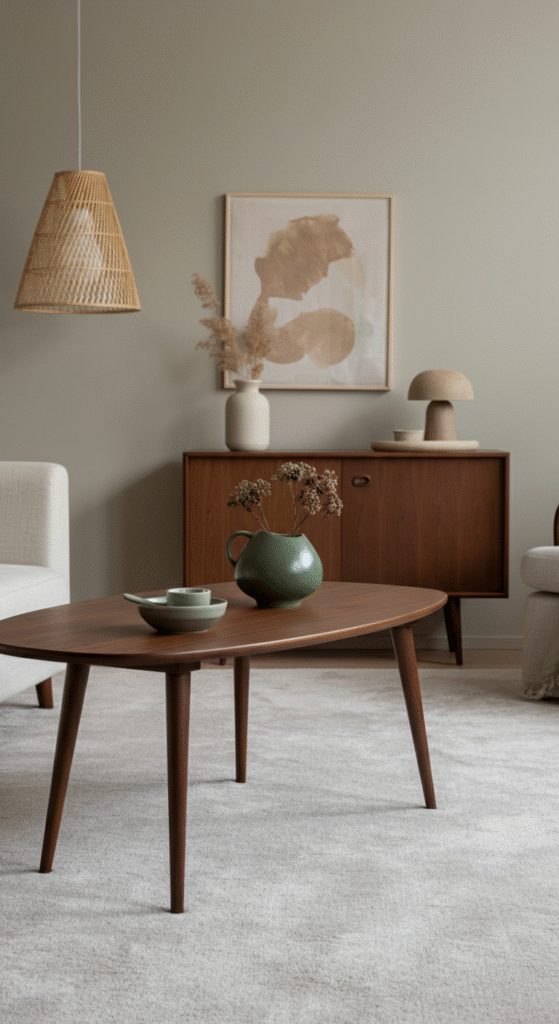
Scandinavian and mid-century styles share DNA — clean lines, function-first design, and organic materials.
A mid-century modern coffee table with tapered legs, smooth curves, and walnut tones introduces a hint of nostalgia while keeping things modern. It’s perfect for those who love vintage flair within a minimalist framework.
Tip: Pair it with iconic Nordic chairs like the Wishbone or Egg Chair to complete the look.
8. Glass-Top Table for Subtle Sophistication
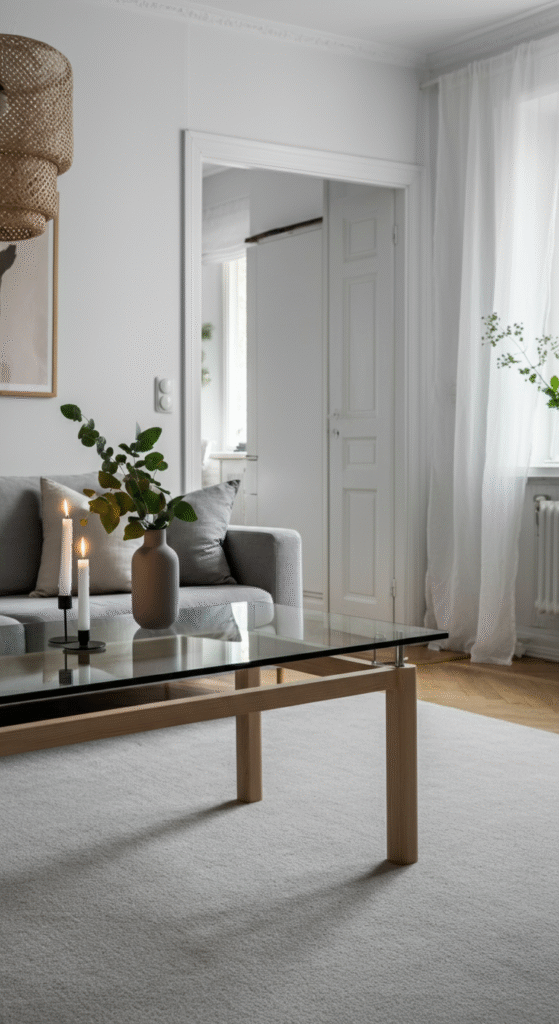
For smaller living rooms, glass-top tables can create the illusion of space. The transparency makes your decor appear lighter and more open, maintaining that airy Scandinavian flow.
Choose ones with wooden or metal frames — think oak legs or powder-coated steel. The contrast of materials adds visual interest without clutter.
This is ideal if you want the function of a coffee table without the visual heaviness.
9. Two-Tier Storage Table
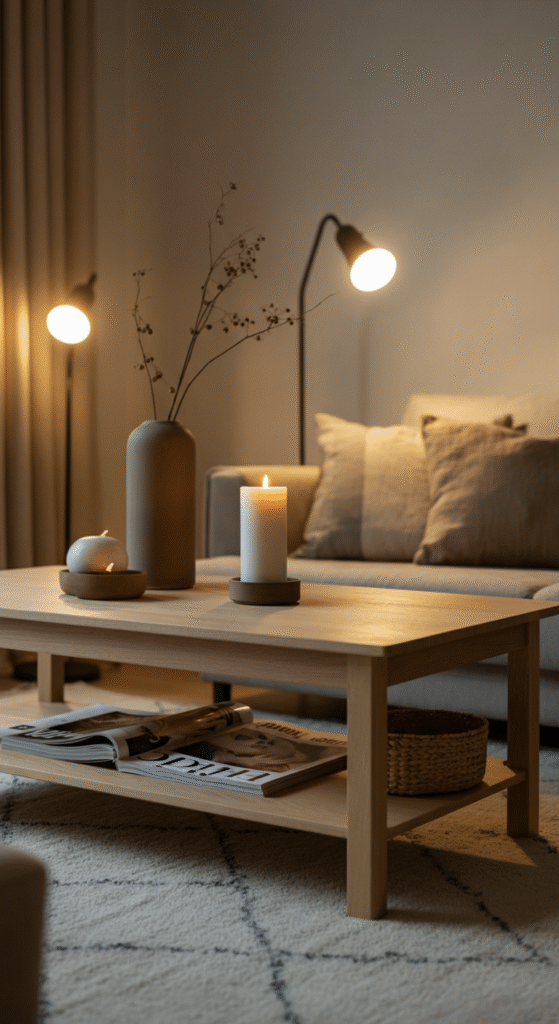
Scandinavians are masters of subtle functionality. A two-tier table gives you extra space for magazines, remotes, or even woven baskets while keeping the surface clean.
Look for neutral colors — white, beige, or soft gray — with a wooden frame. It’s a perfect example of beauty meeting purpose, aligning with the Nordic principle: less, but better.
Interesting fact: In Sweden, the term lagom means “just the right amount.” This design reflects that — practical, not excessive.
10. Soft-Edge Oval Table for Family Spaces
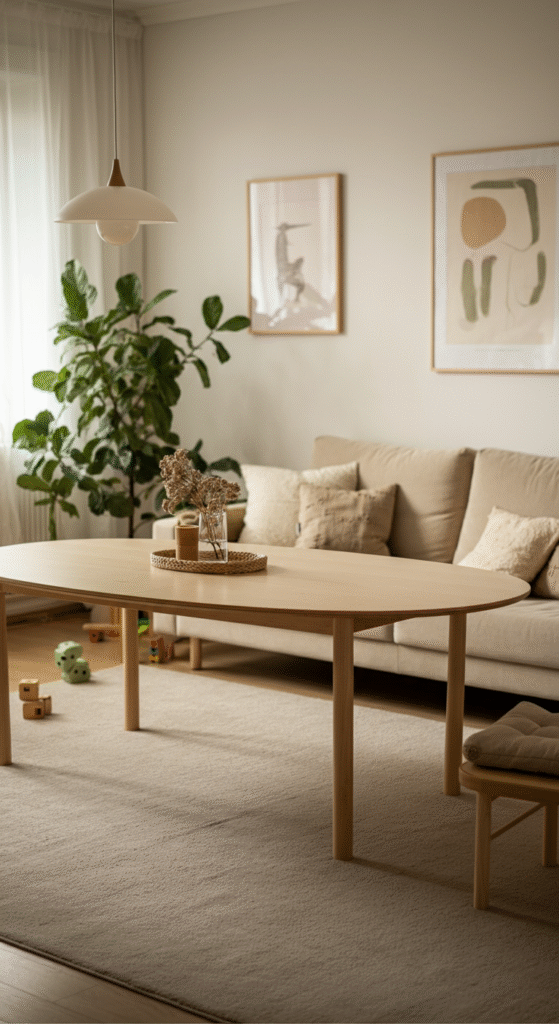
When you have kids or a cozy family setup, sharp corners are a no-go. The oval table brings softness and safety while preserving elegance.
It fits beautifully in open-plan living rooms, encouraging smooth movement and social interaction. Pair it with textured rugs and muted cushions for a balanced look.
This table design feels friendly, relaxed, and truly Scandinavian — where every piece invites togetherness.
11. Sculptural Base Table as Art
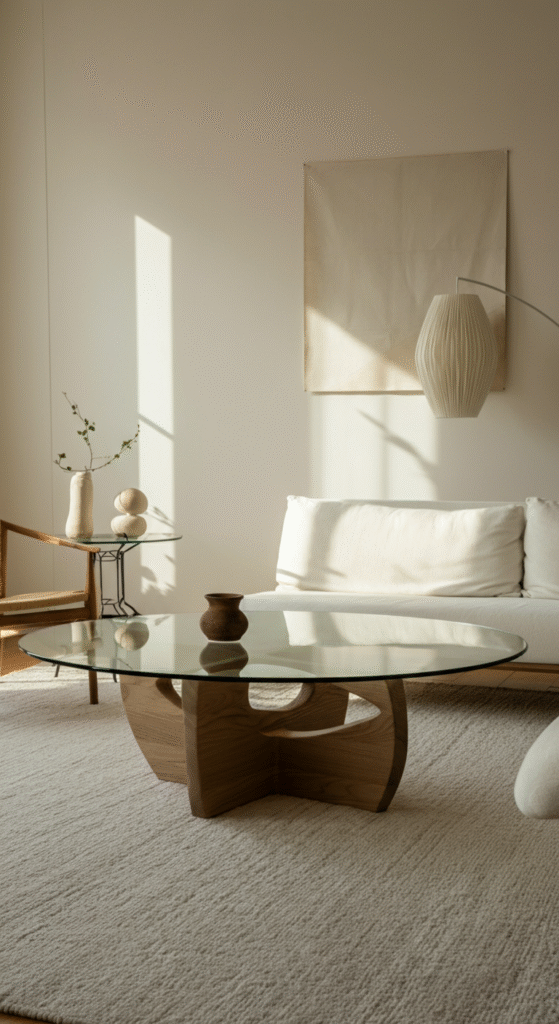
Scandinavian design often blends art with utility. A table with a sculptural or geometric base — maybe a wooden cross-leg or a curved metal form — doubles as a statement piece.
Keep the top minimal (glass, oak, or marble) to ensure the base stands out. It adds personality without overwhelming the calm atmosphere.
Do you know? Many iconic Scandinavian furniture pieces, like those by Alvar Aalto or Arne Jacobsen, were designed as art objects that serve practical use — a core principle of Nordic design.
12. Compact Side Tables for Layered Design
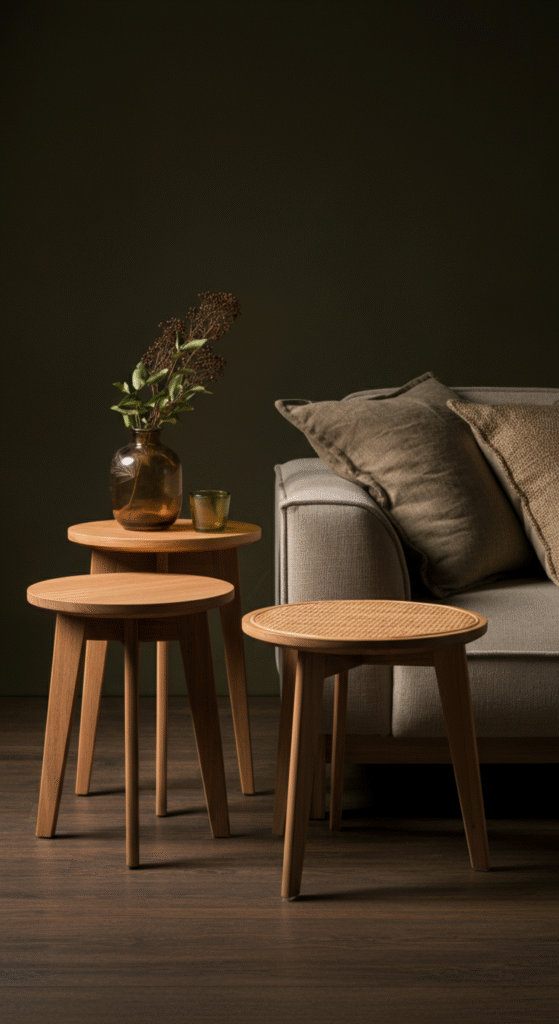
Side tables are underrated heroes in Scandinavian homes. Placing multiple small tables instead of a single large one gives flexibility and rhythm to the layout.
Use a mix of heights, materials, or shapes — perhaps one wooden, one metal, one rattan. The layered setup keeps things dynamic yet minimal. It’s both visually engaging and highly functional.
These tables can move around easily — perfect for a lifestyle that values adaptability and comfort.
13. Floating or Wall-Mounted Table
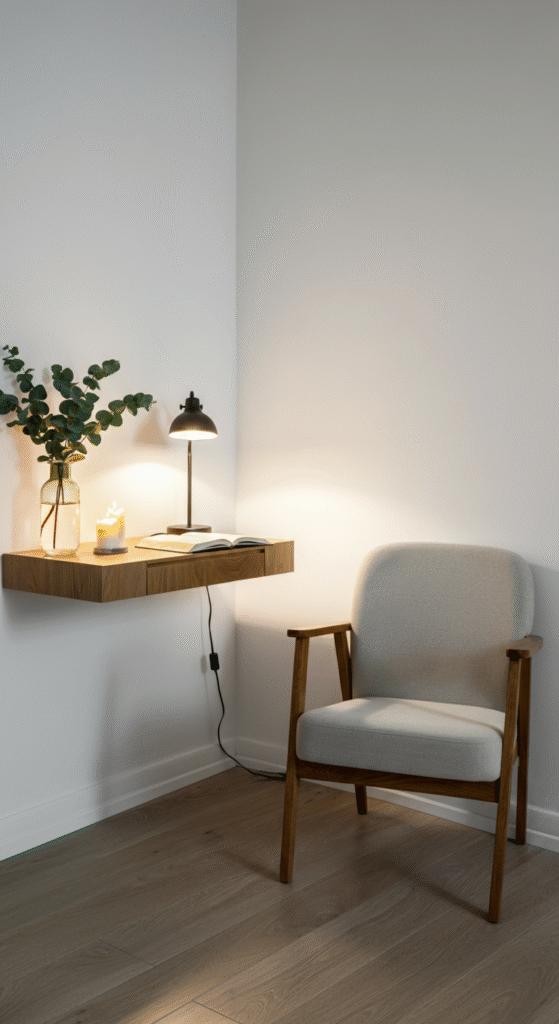
If your living room doubles as a workspace or reading nook, a floating wall-mounted table can maintain open floor space while offering practicality.
Choose a slim wooden surface mounted against a neutral wall. It acts as a shelf, a coffee spot, or even a small desk. Add a cozy armchair beside it to complete your serene Scandinavian corner.
Myth: Scandinavian design isn’t about having “less” furniture — it’s about having the right furniture that enhances comfort and space awareness.
Bonus Idea: Combine Natural Materials
For a deeply Nordic atmosphere, combine wood, stone, metal, and linen textures. A table that merges materials — for example, a wooden base with a stone top or a rattan lower shelf — creates tactile harmony.
Scandinavian interiors rely on contrast: soft and hard, light and dark, smooth and rough. Your table can act as that balancing bridge between different textures and tones.
Fact: Natural materials are central to Nordic culture due to their sustainability and connection to nature — a key value in Scandinavian design philosophy.
Conclusion
A Scandinavian living room table isn’t just furniture — it’s the soul of the space.
It anchors your decor, sets the tone for calm living, and reflects your appreciation for simplicity and balance.
Whether you go for light wood minimalism, a functional nesting design, or a sculptural art piece, the essence remains the same — comfort, clarity, and connection to nature.
So, next time you step into your living room, ask yourself: does your table make the space feel calm, intentional, and alive?
If not, one of these 13 Scandinavian living room table ideas might just be the perfect starting point for your peaceful, minimalist transformation.
Frequently Asked Questions (FAQs)
What makes a table “Scandinavian” in design?
A Scandinavian table is defined by simplicity, functionality, and natural materials. It typically features clean lines, light wood tones, and minimal decoration. The goal is to maintain a calm, clutter-free space that feels cozy yet modern. Scandinavian design focuses on how the piece serves your lifestyle, not just how it looks.
Which materials are most common in Scandinavian living room tables?
The most common materials include oak, ash, birch, pine, and beech wood, often in light finishes. You’ll also find tables with marble, glass, rattan, or metal accents, maintaining a natural, earthy feel. These materials are chosen not only for aesthetics but also for their durability and connection to nature.
Can I mix Scandinavian tables with other interior styles?
Yes — Scandinavian design is extremely versatile. You can blend it with modern, Japandi, boho, or industrial styles easily. For example, pair a Scandinavian light-wood table with metal-framed chairs for an industrial look, or with linen cushions and rattan accents for a boho twist.
Why do Scandinavian interiors use light-colored tables?
Light-colored tables reflect natural light, making rooms appear larger and brighter — a necessity in Nordic regions where daylight hours are limited. This design principle brings warmth, balance, and serenity to the living room while maintaining a clean aesthetic.
Are Scandinavian tables good for small living rooms?
Absolutely. Scandinavian tables are known for their compact, functional designs — like nesting tables or glass-top styles — that maximize visual space. Their minimalist structure ensures the room feels open, not crowded.
